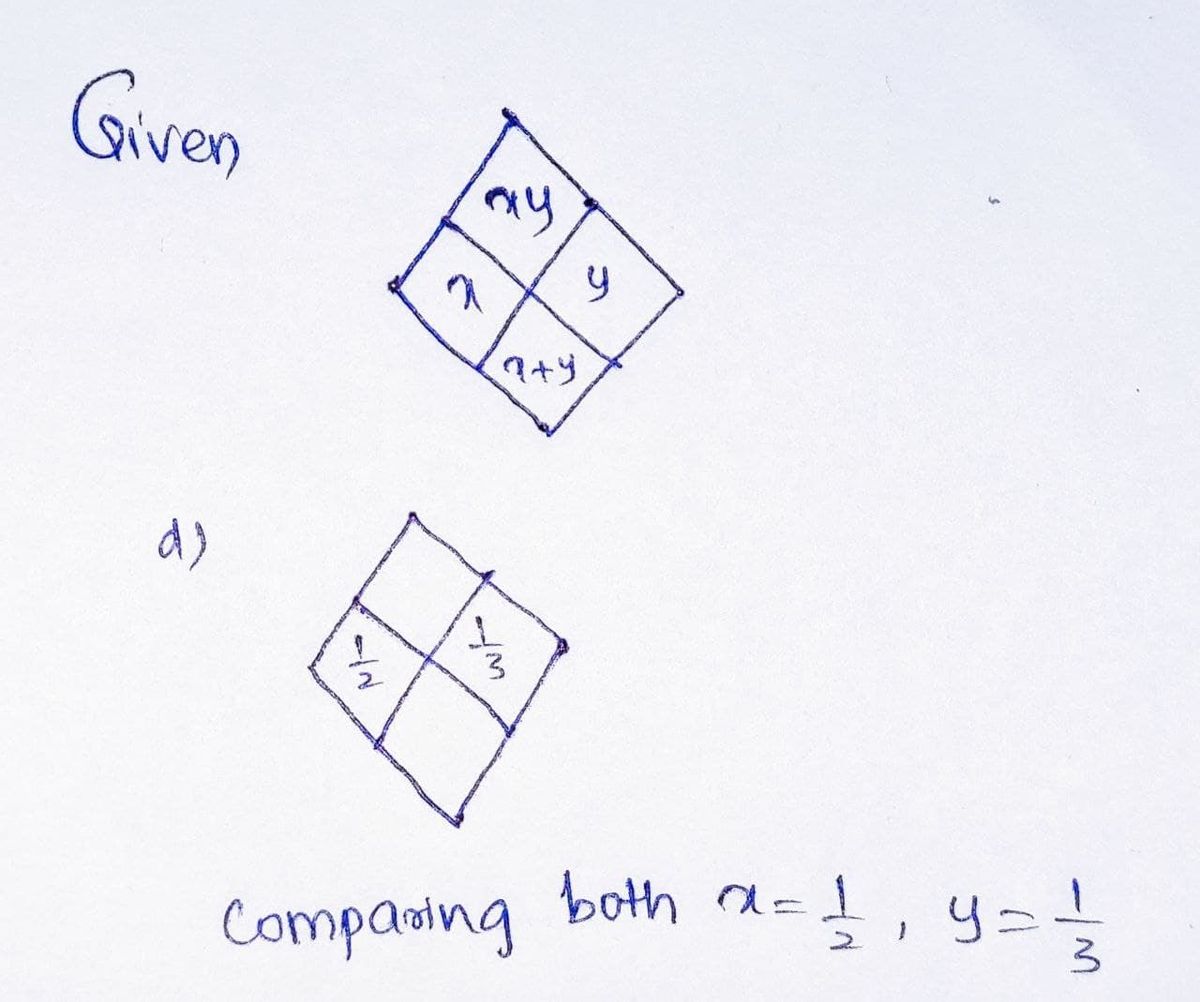
Algebra and Trigonometry (6th Edition)
6th Edition
ISBN: 9780134463216
Author: Robert F. Blitzer
Publisher: PEARSON
expand_more
expand_more
format_list_bulleted
Question

Transcribed Image Text:The image contains two diamond-shaped diagrams, each divided into four smaller sections.
### Left Diamond Diagram:
- **Top Section:** Contains the number 2.
- **Bottom Section:** Contains the number 2.
- **Left Section:** Contains the number 1.
- **Right Section:** Contains the number 1.
### Right Diamond Diagram:
- **Top Section:** Contains the addition symbol (+).
- **Bottom Section:** Contains the subtraction symbol (-).
- **Left Section:** Contains the division symbol (÷).
- **Right Section:** Contains the multiplication symbol (×).
These diagrams might be used to help visualize arithmetic operations and number relationships in an educational context. The first diagram uses numbers to potentially illustrate a concept such as balancing or equation setup, while the second diagram focuses on basic arithmetic operations.
Expert Solution
arrow_forward
Step 1

Step by stepSolved in 2 steps with 2 images

Knowledge Booster
Similar questions
- 45x2 1 dxarrow_forwardC. 875 D. 1,715 6. Which expression simplifies to 2.xy/5x? ew 19 A. 10x'y B. 10xy 5.2 C. 20x'y D. 20xyarrow_forward3. Consider the following graphs of rational functions. Write down the horizontal and vertical asymptotes, zeros, and y-intercept, as well as any holes (if applicable). Use this information to find a function R(r) for each graph. Note some graphs have the vertical and horizontal asymptotes marked for you, but the others are not marked. a. b. -9 -8 -7 -6-5 -6 -5 4 -3 -1 3 -2 1 2 3 4 56 -1 10 6 -4 2 0 2 4 -6 -8 -10- -12- 1 2 3 4 5 6arrow_forward
arrow_back_ios
arrow_forward_ios
Recommended textbooks for you
 Algebra and Trigonometry (6th Edition)AlgebraISBN:9780134463216Author:Robert F. BlitzerPublisher:PEARSON
Algebra and Trigonometry (6th Edition)AlgebraISBN:9780134463216Author:Robert F. BlitzerPublisher:PEARSON Contemporary Abstract AlgebraAlgebraISBN:9781305657960Author:Joseph GallianPublisher:Cengage Learning
Contemporary Abstract AlgebraAlgebraISBN:9781305657960Author:Joseph GallianPublisher:Cengage Learning Linear Algebra: A Modern IntroductionAlgebraISBN:9781285463247Author:David PoolePublisher:Cengage Learning
Linear Algebra: A Modern IntroductionAlgebraISBN:9781285463247Author:David PoolePublisher:Cengage Learning Algebra And Trigonometry (11th Edition)AlgebraISBN:9780135163078Author:Michael SullivanPublisher:PEARSON
Algebra And Trigonometry (11th Edition)AlgebraISBN:9780135163078Author:Michael SullivanPublisher:PEARSON Introduction to Linear Algebra, Fifth EditionAlgebraISBN:9780980232776Author:Gilbert StrangPublisher:Wellesley-Cambridge Press
Introduction to Linear Algebra, Fifth EditionAlgebraISBN:9780980232776Author:Gilbert StrangPublisher:Wellesley-Cambridge Press College Algebra (Collegiate Math)AlgebraISBN:9780077836344Author:Julie Miller, Donna GerkenPublisher:McGraw-Hill Education
College Algebra (Collegiate Math)AlgebraISBN:9780077836344Author:Julie Miller, Donna GerkenPublisher:McGraw-Hill Education

Algebra and Trigonometry (6th Edition)
Algebra
ISBN:9780134463216
Author:Robert F. Blitzer
Publisher:PEARSON

Contemporary Abstract Algebra
Algebra
ISBN:9781305657960
Author:Joseph Gallian
Publisher:Cengage Learning

Linear Algebra: A Modern Introduction
Algebra
ISBN:9781285463247
Author:David Poole
Publisher:Cengage Learning

Algebra And Trigonometry (11th Edition)
Algebra
ISBN:9780135163078
Author:Michael Sullivan
Publisher:PEARSON

Introduction to Linear Algebra, Fifth Edition
Algebra
ISBN:9780980232776
Author:Gilbert Strang
Publisher:Wellesley-Cambridge Press

College Algebra (Collegiate Math)
Algebra
ISBN:9780077836344
Author:Julie Miller, Donna Gerken
Publisher:McGraw-Hill Education